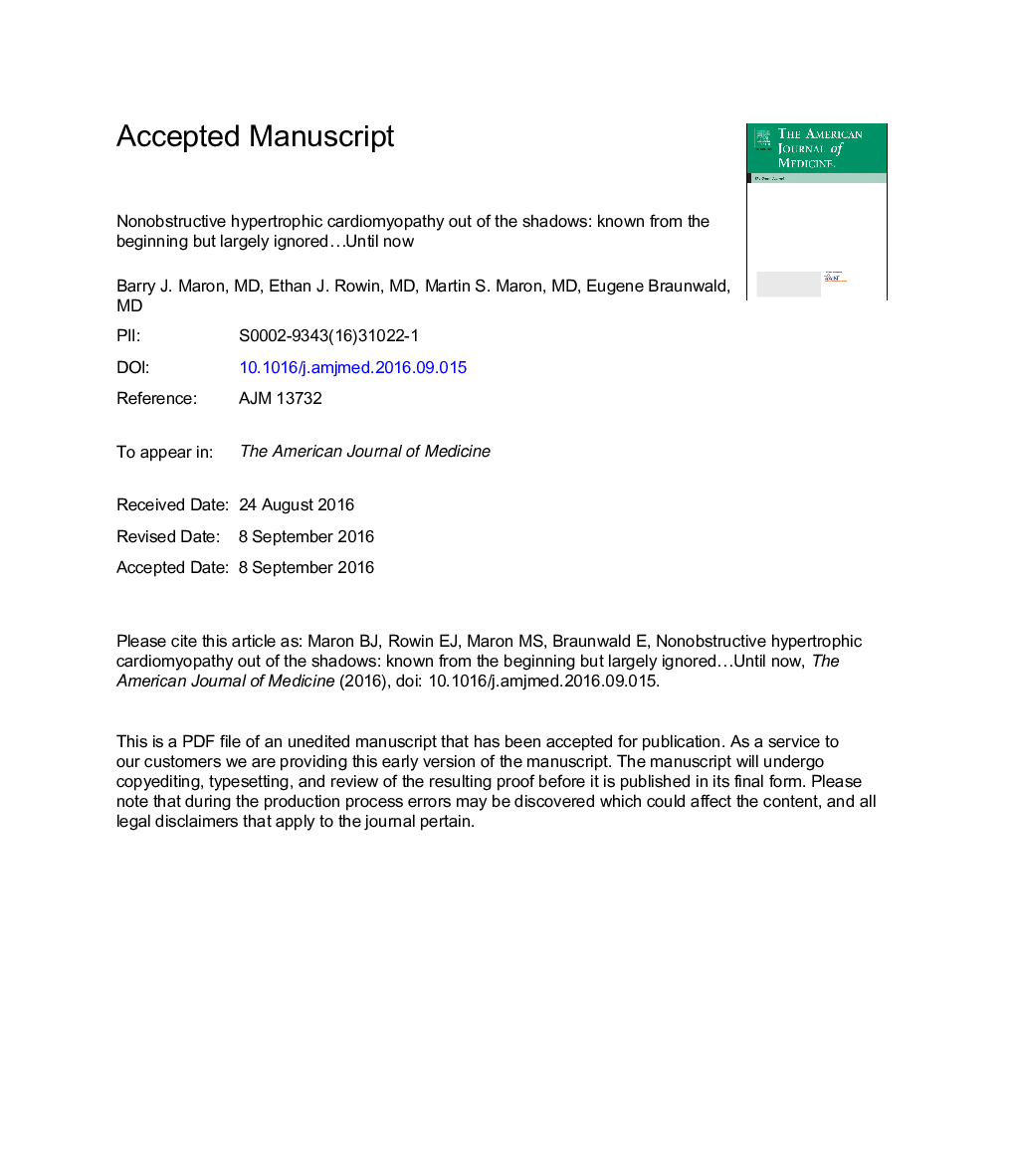| Article ID | Journal | Published Year | Pages | File Type |
|---|---|---|---|---|
| 5576575 | The American Journal of Medicine | 2017 | 16 Pages |
Abstract
Hypertrophic cardiomyopathy was first recognized as a disease of obstruction to left ventricular outflow, hence, its early names and acronyms such as idiopathic hypertrophic subaortic obstruction. The nonobstructive subset of patients, incapable of developing mechanical impedance to left ventricular outflow at rest or with physiologic exercise, was initially recognized by the Braunwald group at the National Institutes of Health >50 years ago in the preimaging era, and is now recognized as comprising about one-third of hypertrophic cardiomyopathy patients. Nevertheless, until recently, and for 25 years, this substantial patient subset has been largely ignored and incompletely understood in terms of its clinical significance and consequences. However, the newfound interest in nonobstructive hypertrophic cardiomyopathy with recent cohort data permits more robust clarity of this subset, as well as the overall disease spectrum. As a group, patients with nonobstructive disease experience a largely stable clinical course at relatively low risk for progressive heart failure symptoms to New York Heart Association class III/IV in (90%). On the other hand, there is a small but important subgroup of 10% at risk for developing drug-refractory advanced heart failure sufficient to justify consideration for heart transplant as the only definitive treatment option. This recognition closes a significant gap in understanding the natural history of hypertrophic cardiomyopathy, also underscoring that the disease is not uniformly grim but instead consistent with extended longevity, thereby providing many patients with a measure of reassurance.
Related Topics
Health Sciences
Medicine and Dentistry
Medicine and Dentistry (General)
Authors
Barry J. MD, Ethan J. MD, Martin S. MD, Eugene MD,
